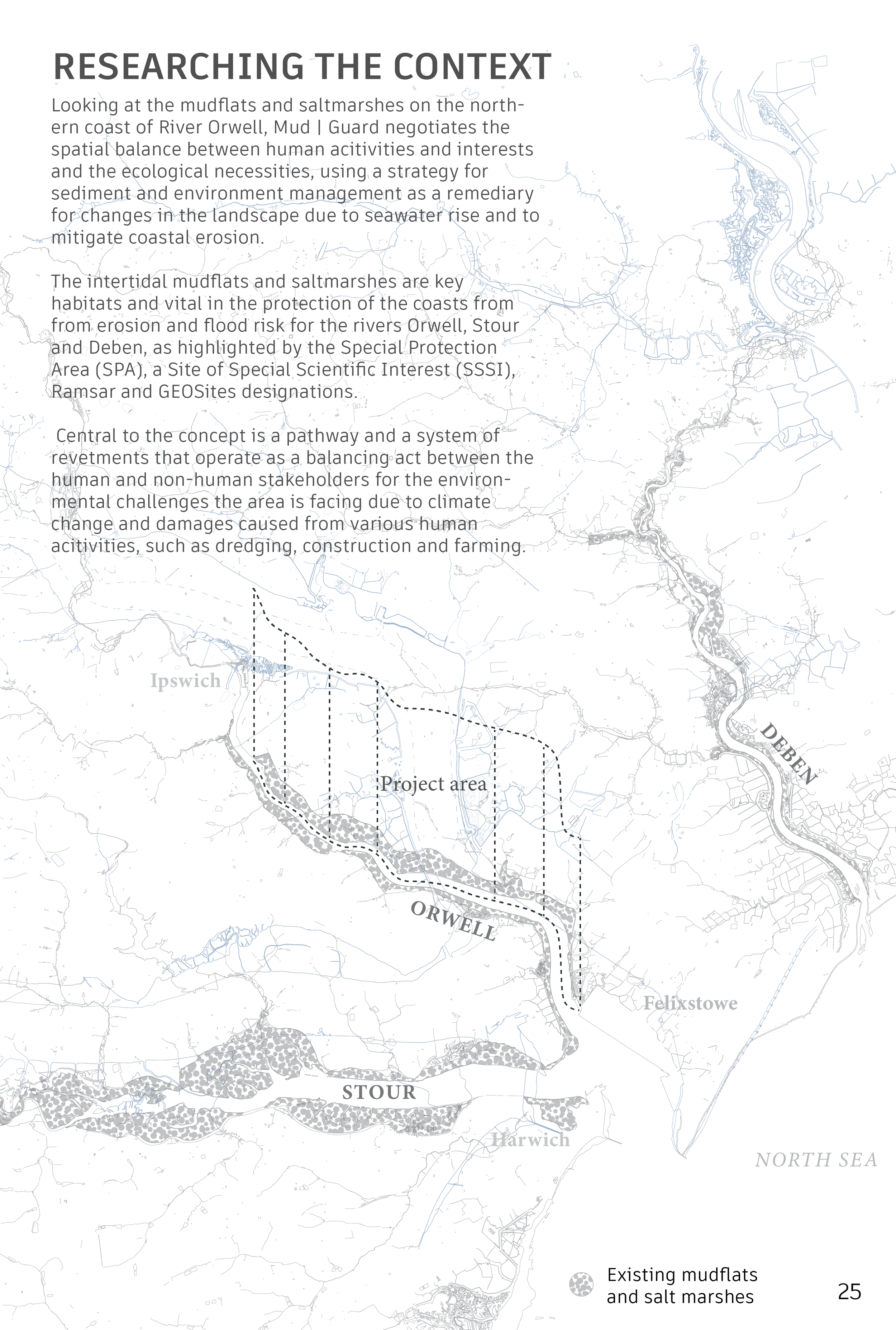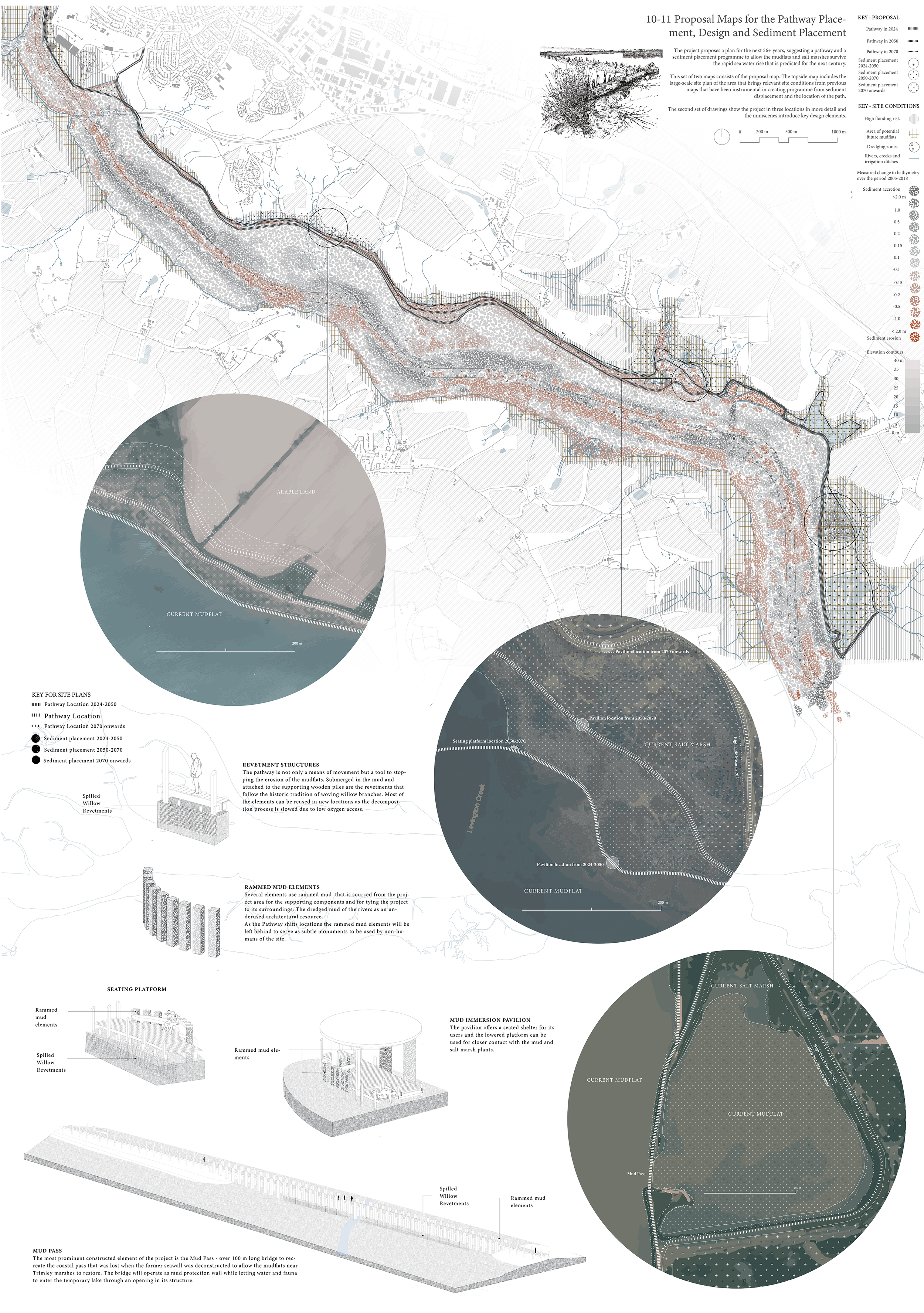Mud | Guard: Negotiated Sediment
Date: Jan - Sep 2024
University of Greenwich, Advanced Design Studio Part 2
Author: Hannes Aava
Tutors: Ed Wall (lead), Helena Rivera (lead), Samuel Sheard (workshop), Sven Reindl (workshop), Robbie Munn (photohraphy)
About:
Mud | Guard negotiates the spatial balance between human acitivities and the ecological necessities, using a strategy for sediment and environment management as a remediary for changes in the landscape due to predicted seawater rise and to mitigate coastal erosion. Due to combined effects of human acitvities and the drastic loss of eelgrass during the past century caused by michorrizal diseases the mudflats of Orwell have been in steady decline, leading to habitat loss and increased coastal erosion.
Central to the proposal is a dynamic pathway that includes willow revetments in its structure and mudflat renewal using the dredged sediment, that operate as a balancing act between the human and non-human stakeholders. Using wood and vernacular willow coppice revetments for the mudflat erosion control as principal construction materials the pathway and sediment displacement shift with the water level rise. Additionally, the larger constructed objects feature rammed mud elements that are behind as monolithic entities degrading in the landscape as the pathway is relocated to higher elevations. The remnants will serve as a testament to the dynamic relationship of humans and the environment.
As part of the deliverables of the course, the project’s representation put emphasis on hatches and linework and include a ‘tapestry’ – a multi-layered model for expressing the narrative of the project in various spatial and temporal scales. Inspired by Marcel Duchamp’s ‘Museum of Curiosities’ and ornate Edo-period Japanese bento boxes, I decided to make my tapestry as a foldable box that includes a miniscule booklet introducing the ecology of the mudflats and saltmarshes, mud samples from the site and an example of the rammed mud.









